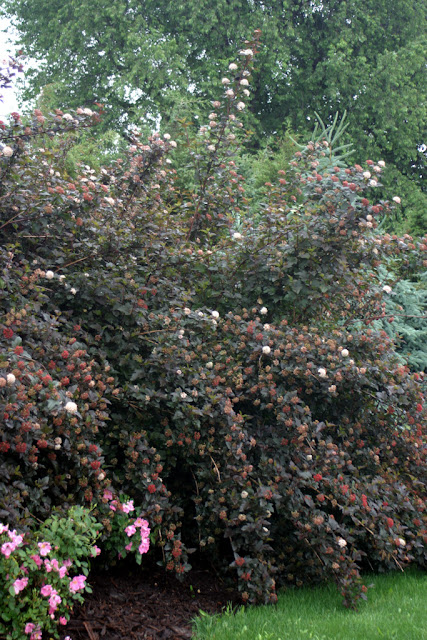Boxwood, because of its functionality and deer resistance, is one of the most utilized landscape plants in the world. Unfortunately, boxwood blight, a lethal disease caused by the fungus Calonectria pseudonaviculatum, is threatening this iconic shrub. The disease, well established in Europe, has crossed the big pond and is now killing boxwood in North America.
In the fall of 2011, boxwood blight was detected in North Carolina and Connecticut. Since then, it has been found in Alabama, Delaware, Florida, Georgia, Kentucky, Kansas, Massachusetts, Maryland, Missouri, New Jersey, New York, Ohio, Pennsylvania, Oregon, Tennessee, Virginia, and West Virginia. The fungus is spread by the transport of infected plants and from infected plants to healthy plants via hedge shears, animals, and human touch. It is a slow but methodical spread that continues to widen. With that spread, plant breeders and researchers have been working to solve this problem.
One of the simplest solutions is to use alternative plants that have the same utility as boxwood but are unaffected by the disease. Two species that have the greatest potential to be suitable boxwood substitutes are Ilex crenata, Japanese holly and Ilex glabra, inkberry holly. Both have small, broad, evergreen leaves and dense branching that responds well to being sheared into hedges, globes, and spires.
Inkberry
Inkberry, or inkberry holly, is an Eastern North American native evergreen that is hardy in zones 5-9. Typically it is a large plant maturing at 5 to 6 feet in height. It grows best in moist, acidic soils but is adaptable to most average garden soils. Rutgers University lists it as moderately deer resistant, being seldom severely damaged by deer. There are a number of cultivars on the market that are more compact than typical; however, most have a tendency to lose their leaves on the lower portion of the plant with age. Recently two new selections have been introduced that look and behave much more like boxwood.
The first selection is called Gem Box® Ilex glabra 'SMNIGAB17'. This plant was developed at Spring Meadow Nursery. Hundreds of seedlings were grown out and field evaluated over a ten-year time frame. Any plants that developed bare stems were eliminated from the trial. In addition, plants that had winter burn or that were damaged by snow load were also destroyed. With time, and the destruction of many plants, about a dozen individuals were selected, propagated, and trialed again, both in containers and in the field. The very best of these plants was eventually chosen and introduced in the spring of 2015 under the name Gem Box. The demand for Gem Box was so large that Spring Meadow had to hold off a year on shipping to build up a larger stock block. In 2016, thirty thousand plants were shipped to growers. By spring of 2018, the sales jumped to just under 100,000 plants, and a good number more could have been sold if only there had been more plants. Obviously, there is a huge demand for a good boxwood alternative.
Gem Box® inkberry has extremely dense branching and small, glossy leaves, but most importantly, it retains its lower foliage, making it an excellent replacement for boxwood. In the spring, with the initial flush of growth, the foliage exhibits an attractive cast of reddish-burgundy coloration. In the spring, if you look closely, you will find that it has small white flowers, and if you have a male pollinator nearby, you will also get small black fruit later in the summer. Neither the flowers nor the fruit are very noticeable. While the plants are naturally dense and rounded in habit, it responds wonderfully to pruning and can be sheared in globes or hedges with round or squared-off edges.
This spring, another inkberry boxwood substitute will be available to growers. This selection, called Strong Box® Ilex glabra 'Ilexfarrowtracey', was developed by Mike Farrow of Maryland. We trialed this variety in our test field for over five years, and we were very impressed with its dense habit, dark green foliage, and superb winter hardiness. It has larger leaves than Gem Box® and a more mounded habit, making it quite distinct. The foliage is thick and dense even on the lower branches.
And now for something completely different: Juke Box® ×Pyracomeles is one of my favorite boxwood alternatives. This remarkable new broadleaf evergreen could easily be mistaken for a boxwood.
 |
| Juke Box® sheared into a ball looks a lot like a boxwood. |
This new plant comes without the threat of boxwood blight because it is an intergeneric hybrid between Pyracantha and Osteomeles. It had no thorns, no flowers and like a boxwood, can be sheared and shaped as desired. It reminds me of a 'Morris Midget' boxwood but with much faster growth. This new plant comes from Dr. Tom Ranney of North Carolina State University.
\
When left unpruned, it forms a thick, mounded evergreen mat, but with a little bit of shearing, it can be formed into a ball, box, or a low hedge.
Initially I did not think this plant was going to be hardy in Michigan, and based on the parents, I listed it as a zone 7 plant. We have now overwintered it successfully in our test field for three years, and it has not missed a beat. It is certainly hardy to zone 6 and perhaps zone 5b.
While plant pests and diseases can be disruptive, they can also force us to think creatively and can bring new opportunities. There are so many beautiful and useful plant species in the world, so we have lots of choices. When it comes to replacing boxwood, these three selections fit the niche.
Well, I've got to catch a plane to England. So many plants and gardens to see. I'll let you know what I find when I get back. Cheerio!























































